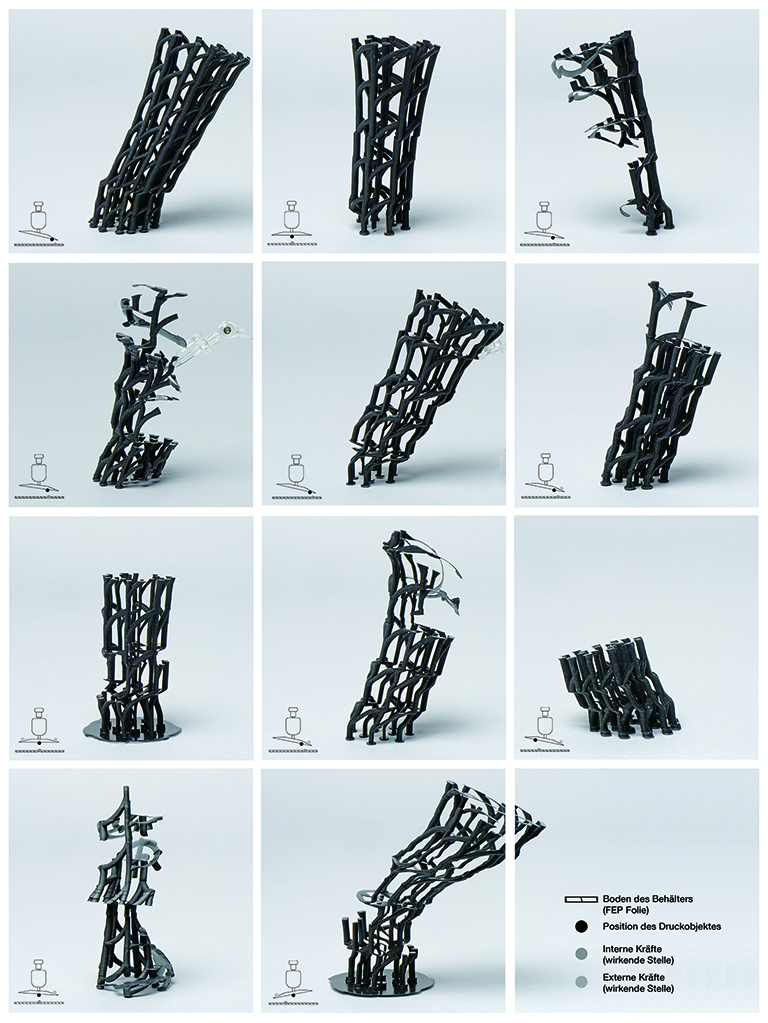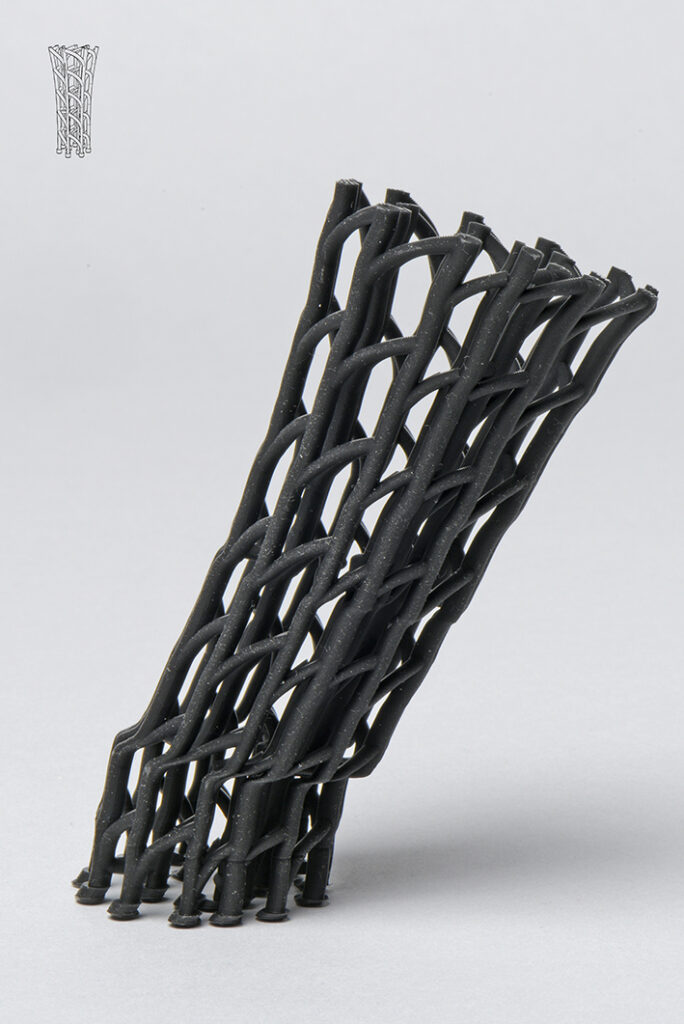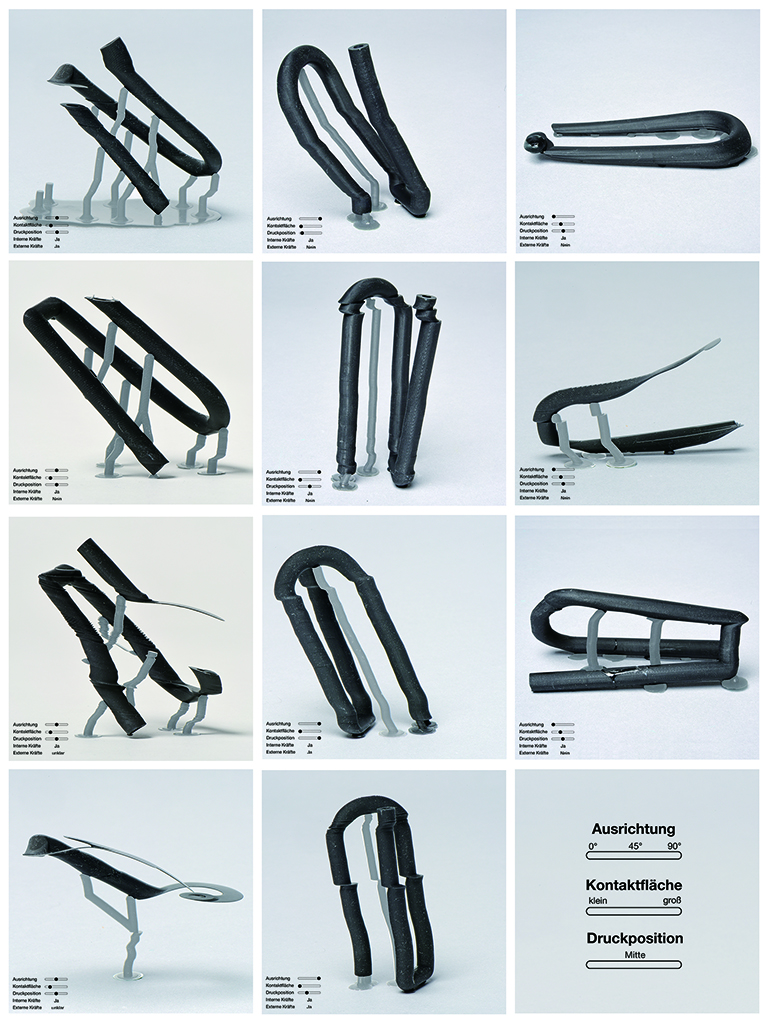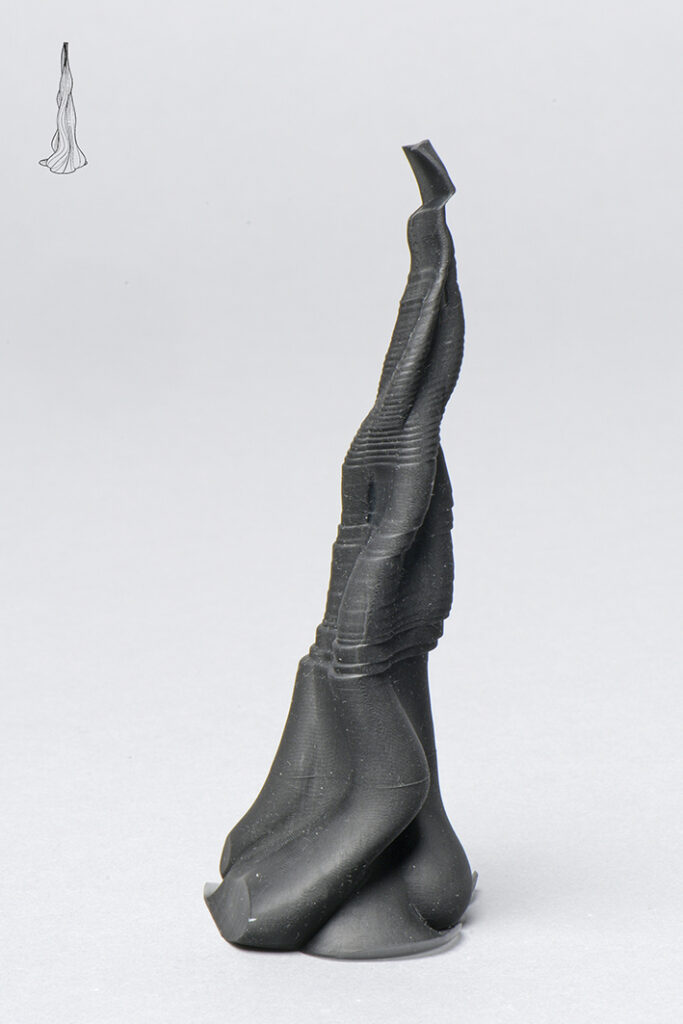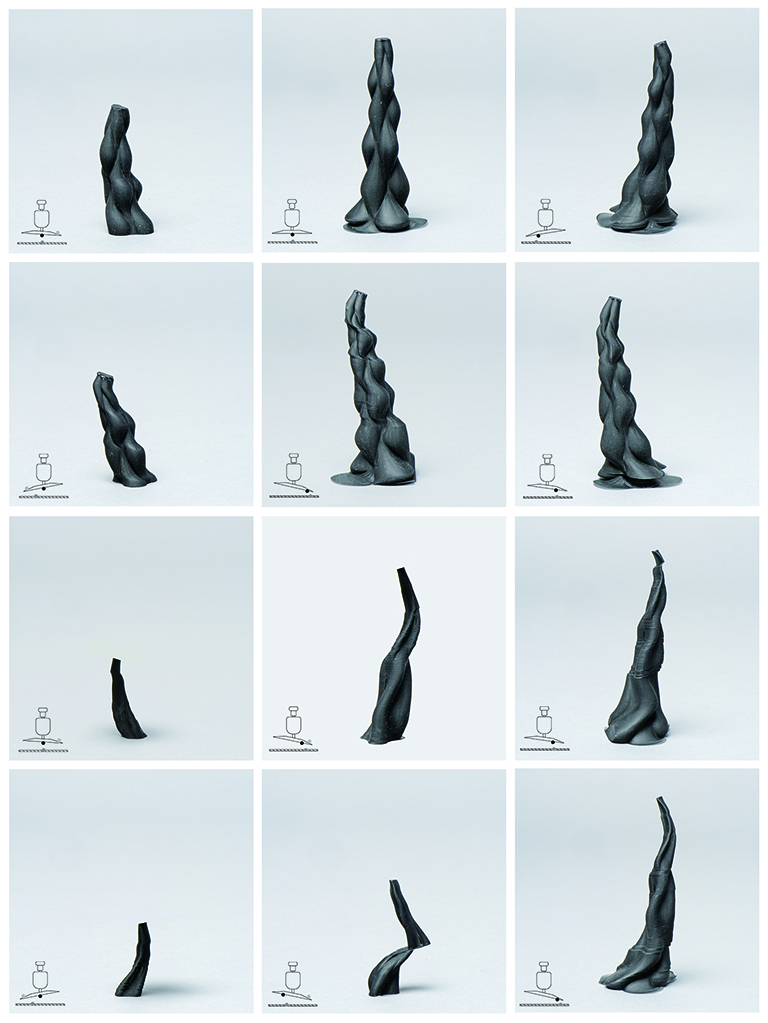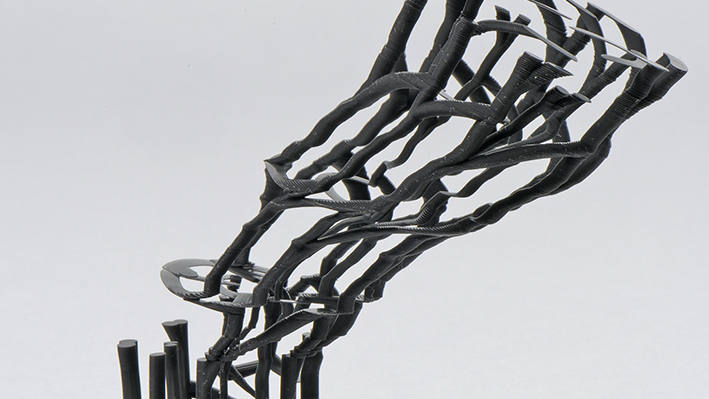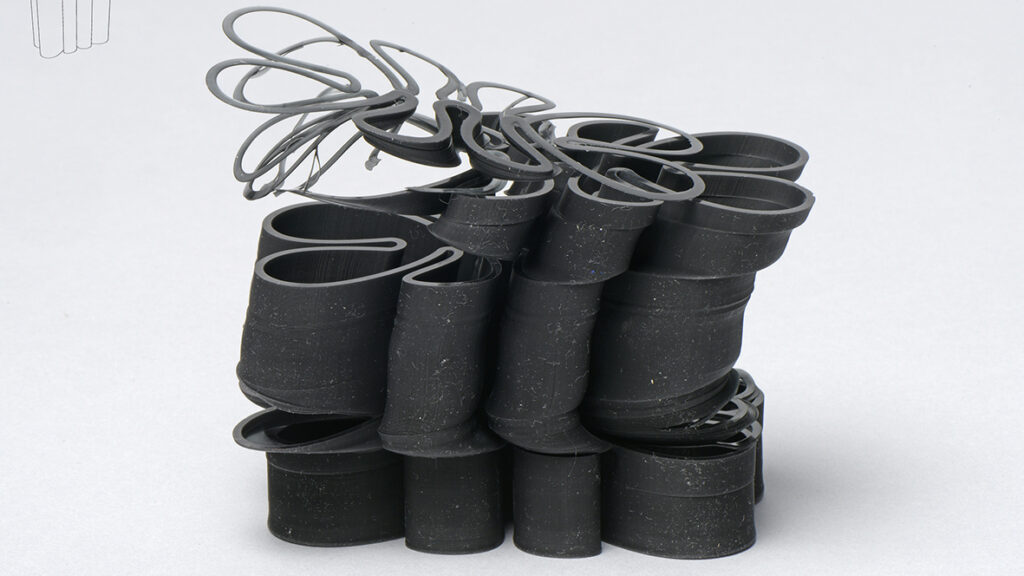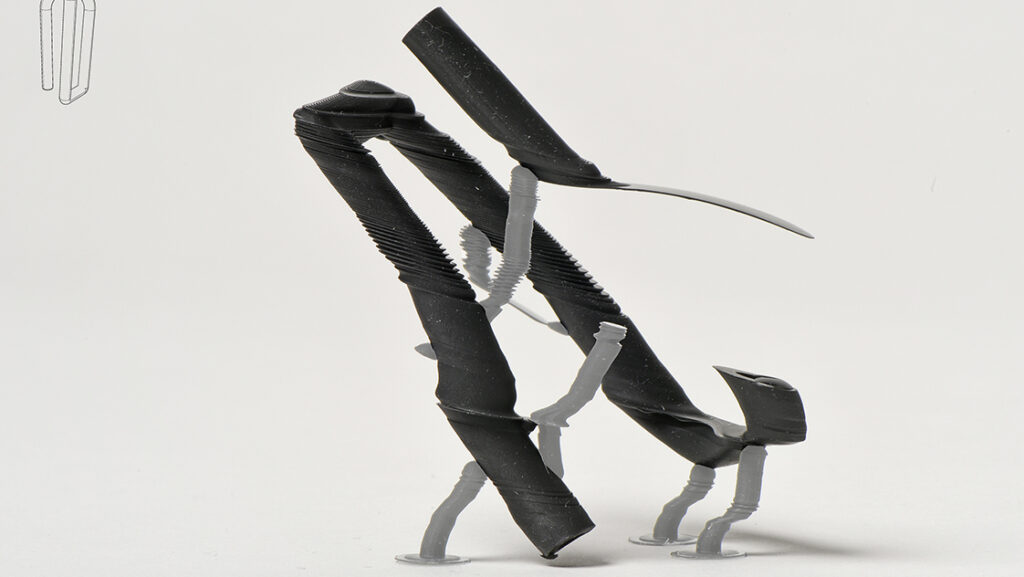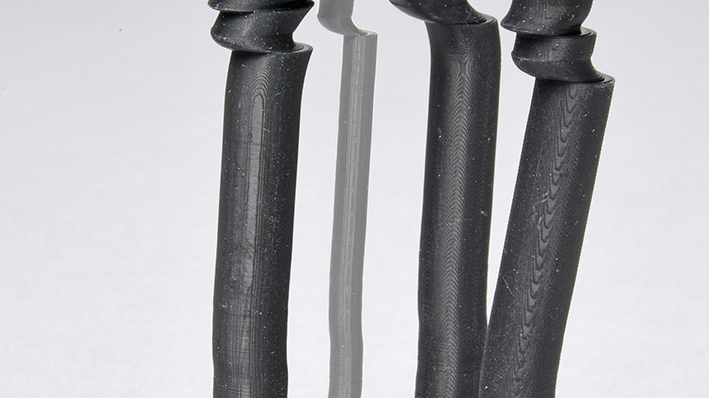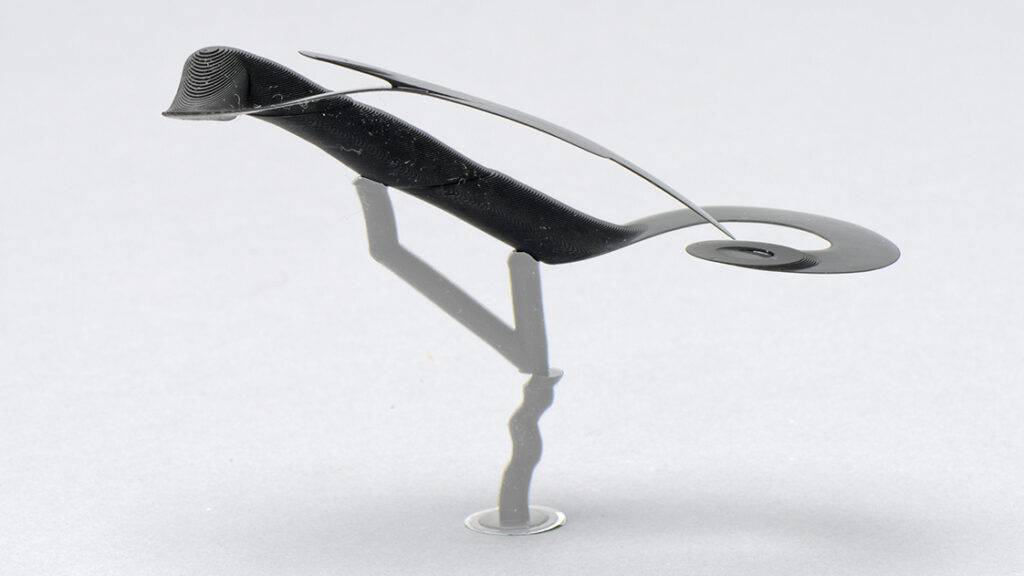Deutsch
English
„Die resiliente Form“ beschäftigt sich mit einem Formgebungsprozess, bei dem die harzbasierte 3D-Drucktechnologie zum Einsatz kommt. Hierbei ist der Druckprozesses erheblichen externe Störungen ausgesetzt, auf welche der Drucker mit der Erzeugung einer spezifischen Formensprache reagiert. Die Störungen umfassen sowohl interne Kräfte, die durch den Druckprozess selbst verursacht werden, als auch externe Kräfte, die durch Manipulationen auf der Druckplattform erzeugt werden. Durch das Zusammenwirken von Kräften befindet sich die Druckplattform während des Prozesses im instabilen Zustand, was zu einer Versetzung der Druckschichten führt.
Pflanzenwachstum ist ein interaktiver Prozess, bei dem die Morphologie sowohl von der Genetik als auch von der Umwelt mitbestimmt wird. Das in den Genen festgeschriebene Charakteristikum bestimmt die Grundlage der Form, darüber hinaus üben die wechselnden Umweltbedingungen einen signifikanten Einfluss aus. Auf der Grundlage dieses Phänomens wird in diesem Projekt das 3D-Druckverfahren so manipuliert, dass sich die entstehenden Kräfte auf die Druckergebnisse auswirken und dadurch verzerrte Formen erzeugt werden.
Der „digitale“ Formbildungsprozess ist in diesem Projekt eng mit den physischen Kräften verknüpft, daher steht die Interaktivität des Prozesses im Mittelpunkt. Um die folgenden drei Zielstellung wurden alle Experimente durchgeführt:
Welche Kräfte traten während des Druckprozesses auf ?
Woher kamen die Kräfte?
Wie wirkten die Kräfte auf Formen?
Das Druckprozess werden obwohl von der Maschine gesteuert, besteht mein Ziel bei der finalen Visualisierung darin, die Kräfte sich als „Co-Gestalter“ durch bestimmte Manipulationen an diesem Prozess zu beteiligen. Daher wird dies als ein interaktiver Gestaltungsprozess verstanden, zu den Teilnehmern gehören Kräfte und 3D-Drucker.
Entgegen der Betonung von hoher Präzision in digitalen Fertigungsprozessen ist das Ziel dieses Projekts nicht, perfekte Formen zu erzeugen. Vielmehr wird die eingesetzte Technologie als Gestaltungsmittel verstanden, um einen interaktiven Gestaltungsprozess mit besonderem Augenmerk auf eine technologiebezogene Formensprache in den Mittelpunkt zu stellen.
The resilient form deals with a sculpting process in which the resin-based 3D printing process is exposed to significant external disturbances, to which the printer responds by generating a specific form language. The disturbances include both internal forces caused by the printing process itself and external forces generated by manipulations on the printing platform. Due to the interaction of forces, the printing platform is in an unstable state during the process, which leads to a dislocation of the printing layers.
Plant growth is an interactive process in which morphology is co-determined by both genetics and the environment. The fundamental characteristic of shape is determined by the genes, but changing environmental conditions also have a significant influence. Inspired by this phenomenon, the 3D printing pro-cess in this project is manipulated in such a way that the resulting forces affect the printing results, producing distorted shapes.
In this project, the "digital" forming process is closely linked to the physical forces, so the focus is on the interactivity of the process. All experiments were conducted around the following three objectives:
What kind of forces occurred during the printing process ?
Where did the forces come from?
How did the forces act on molds ?
The printing process, although controlled by the machine, my goal in the final visualization is to have the forces participate in the process as "co-creators" through certain manipulations. Consequently, this project should be understood as an interactive design process, the participants include forces and 3D printers.
Contrary to the emphasis on high precision in digital manufacturing processes, the goal of this project is not to produce perfect shapes. Rather, the applied technology is understood as a design tool to focus on an interactive design process with special attention to an enviromentally-dependent language of forms.
